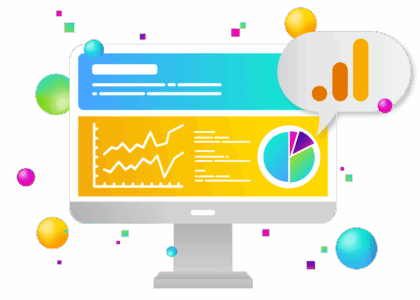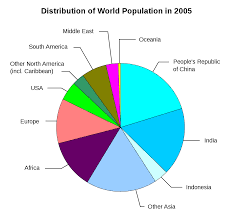Data Analysis Methods: Unveiling Insights from Information
Data analysis methods are essential tools used to uncover meaningful insights from vast amounts of data. In today’s data-driven world, businesses and organisations rely on these methods to make informed decisions, identify trends, and predict future outcomes.
Descriptive Analysis
Descriptive analysis involves summarising and presenting data in a meaningful way. This method helps in understanding the basic characteristics of the data, such as mean, median, mode, and standard deviation. Visualisations like histograms, pie charts, and scatter plots are commonly used in descriptive analysis to provide a clear picture of the data.
Inferential Analysis
Inferential analysis is used to draw conclusions or make predictions about a population based on a sample of data. Techniques such as hypothesis testing and regression analysis fall under this category. By analysing sample data, inferential analysis allows us to make inferences about the larger population from which the sample was drawn.
Predictive Analysis
Predictive analysis involves using historical data to forecast future trends or outcomes. Machine learning algorithms play a crucial role in predictive analysis by identifying patterns in data and making predictions based on those patterns. This method is widely used in various industries for tasks like demand forecasting, risk assessment, and customer behaviour prediction.
Prescriptive Analysis
Prescriptive analysis goes beyond predicting outcomes by recommending actions to achieve desired results. By combining predictive models with optimization techniques, prescriptive analysis provides actionable insights for decision-making. This method helps organisations determine the best course of action to maximise efficiency and achieve business objectives.
Conclusion
Data analysis methods form the backbone of modern decision-making processes. By leveraging these techniques effectively, businesses can gain valuable insights that drive growth, innovation, and competitive advantage. Whether it’s understanding customer preferences or optimising operational processes, data analysis methods empower organisations to harness the power of data for strategic decision-making.
Mastering Data Analysis: Six Essential Tips for Effective Methods and Techniques
- Choose the right data analysis method based on the type of data you have.
- Ensure your data is clean and accurate before starting the analysis.
- Use visualisation tools to help identify patterns and trends in the data.
- Consider using statistical tests to validate your findings and draw meaningful conclusions.
- Document your data analysis process thoroughly for reproducibility and transparency.
- Stay updated with new data analysis methods and techniques to improve your skills.
Choose the right data analysis method based on the type of data you have.
When embarking on data analysis, it is crucial to select the appropriate method that aligns with the nature of the data at hand. By carefully considering the type of data you are working with, whether it be numerical, categorical, time-series, or unstructured data, you can ensure that your analysis yields accurate and meaningful results. Choosing the right data analysis method tailored to the characteristics of your data enhances the effectiveness of your insights and enables informed decision-making based on a solid analytical foundation.
Ensure your data is clean and accurate before starting the analysis.
Before delving into data analysis methods, it is crucial to ensure that your data is clean and accurate. Clean and accurate data forms the foundation for reliable insights and meaningful conclusions. By verifying the quality of your data at the outset, you can avoid potential errors or biases that may skew the results of your analysis. Investing time in cleaning and validating your data upfront not only enhances the credibility of your findings but also sets the stage for a more effective and impactful data analysis process.
Use visualisation tools to help identify patterns and trends in the data.
Utilising visualisation tools is a valuable tip when employing data analysis methods as it aids in the identification of patterns and trends within the data. Visual representations such as charts, graphs, and heat maps provide a clear and intuitive way to explore complex datasets, making it easier to spot correlations, outliers, and underlying relationships. By visualising data, analysts can quickly interpret information, communicate findings effectively, and gain deeper insights that may not be apparent from raw numbers alone.
Consider using statistical tests to validate your findings and draw meaningful conclusions.
When utilising data analysis methods, it is crucial to consider incorporating statistical tests to validate your findings and derive meaningful conclusions. Statistical tests provide a rigorous framework for assessing the significance of relationships within the data and determining the reliability of results. By applying statistical tests, you can ensure the robustness of your analysis and have confidence in the conclusions drawn from the data, thereby enhancing the credibility and accuracy of your insights.
Document your data analysis process thoroughly for reproducibility and transparency.
Documenting your data analysis process thoroughly is crucial for ensuring reproducibility and transparency in your work. By meticulously recording each step taken in the data analysis journey, including data cleaning, transformation, and modelling techniques employed, you not only make it easier to replicate your results but also enhance the credibility of your findings. Transparent documentation allows others to follow your methodology, verify your conclusions, and build upon your work, fostering a culture of openness and trust in the field of data analysis.
Stay updated with new data analysis methods and techniques to improve your skills.
To enhance your proficiency in data analysis, it is crucial to stay abreast of the latest advancements in data analysis methods and techniques. By keeping yourself updated with emerging trends and innovative approaches, you can sharpen your analytical skills and expand your repertoire of tools for extracting valuable insights from data. Continuous learning and adaptation to new methodologies not only improve the quality of your analyses but also enable you to tackle complex challenges with confidence and efficiency.






